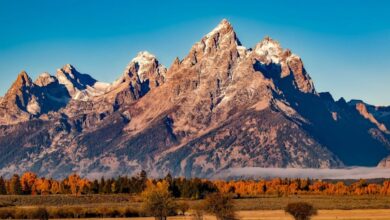What Is the Impact of Climate Change on Whale Watching
Whale watching is a beloved activity for many, offering the chance to witness the majesty of these ocean giants in their natural habitat. However, as climate change continues to alter marine environments, the impact on whale populations and the industry surrounding them is becoming increasingly apparent. The delicate balance of ocean ecosystems is shifting, with potential repercussions for both the whales and the enthusiasts eager to see them.
Changing Migration Patterns
One of the most significant impacts of climate change on whale watching is the alteration of migration patterns. Many species of whales, such as humpbacks and gray whales, undertake long journeys between feeding and breeding grounds. Warmer ocean temperatures and changes in food availability are disrupting these routes, leading to unpredictability in whale sightings. For whale watchers, this unpredictability translates to fewer opportunities to observe these magnificent creatures, which can be disappointing for those who plan their vacations around the chance to see them.
Food Sources in Flux
The health of whale populations is intricately tied to the availability of their primary food sources. As climate change causes shifts in ocean temperatures and salinity levels, it also affects the distribution of krill and small fish, which are essential for whale sustenance. For example, the decline of certain fish stocks in the Northeast United States can lead to a corresponding decline in the number of North Atlantic right whales, a species already critically endangered. As food becomes scarce, whales may travel farther or dive deeper to find sustenance, making them less accessible to whale watchers.
Ecosystem Disruption
The broader ecosystem changes resulting from climate change are also impacting whale populations. Ocean acidification, driven by increased carbon dioxide levels, is affecting the health of marine habitats like coral reefs and the productivity of phytoplankton, which forms the base of the marine food web. These shifts not only threaten the food sources of whales but also the habitats they rely on for breeding and nursing their young. As ecosystems become increasingly unstable, the overall health of whale populations could decline, leading to fewer sightings for enthusiasts.
Increased Competition and Tourist Pressure
As whale watching becomes less predictable due to climate change, competition among tour operators may intensify. More companies may enter the market, leading to overcrowded waters and increased pressure on whale populations. Disturbances from boats can stress whales, affecting their feeding and social behaviors. This heightened pressure raises ethical concerns about the sustainability of whale watching practices and the potential for negative impacts on whale populations.
The Role of Conservation Efforts
Despite the challenges posed by climate change, conservation efforts are crucial for protecting whale populations and improving the whale watching experience. Organizations dedicated to marine conservation are working to study the effects of climate change on marine species and advocate for policies aimed at reducing carbon emissions and protecting vital habitats. By supporting these initiatives, whale watchers can contribute to the long-term health of whale populations and ensure that future generations have the opportunity to witness these incredible animals.
Adapting to Change
As the realities of climate change become increasingly evident, the whale watching industry must adapt. This could involve implementing stricter regulations on boat operations to minimize disturbances, investing in sustainable practices, and promoting education about the importance of marine conservation. Whale watchers can also play a role by choosing eco-friendly operators that prioritize the well-being of marine life over profit.
Looking Ahead
The future of whale watching is closely tied to the health of our oceans and the impacts of climate change. While challenges abound, there is also hope. By raising awareness and implementing proactive measures, there is potential to safeguard both whale populations and the experiences of those who cherish them. The beauty and grace of whales deserve to be celebrated, and with concerted efforts, we can ensure that whale watching remains a cherished activity for years to come.







